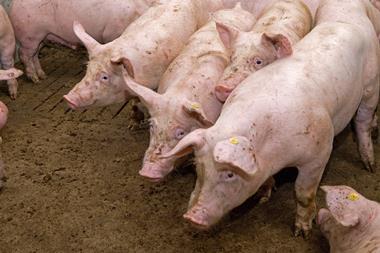Consumers buying British lamb this season stand a higher chance than usual of getting hogget - old lambs from the 2012 season that have been carried over into 2013 because of last year’s bad weather.
About four million hoggets get carried over every year, but this year there are up to 20% more, with an additional 500,000 to 750,000 hoggets expected during the first six months of 2013.
“This carryover is the result of slowed growth rates earlier in the season [in 2012], when poor weather impacted on the performance of lambs,” said Eblex analyst Paul Heyhoe. “With this poor weather generally continuing throughout the rest of the year, lower feed availability and the already slowed growth rates meant that finishing conditions were difficult. This resulted in lower slaughterings and more lambs still being on farm at the end of the year.”
For May and June alone, up to 200,000 additional hoggets are expected to be slaughtered, but Heyhoe said although this was higher than usual, it compared with a total kill of 200,000 a week, “meaning even at the upper end, the estimate is still only equivalent to an extra week’s kill over the space of two months”.
Hoggets are also known as “old-season lamb”. They can be sold as “lamb” by retailers without any requirement for extra labelling. However, many mults specifically labelled new-season lamb when it became available en masse in May and June, to flag up the new crop to shoppers, said Eblex trade marketing manager Mike Whittemore.
“Some in the industry will say that new-season lamb is sweeter in taste than old-season lamb and can be more tender. However, some will take the opposite view and point out that older season lamb has the mature taste that gives the lamb connoisseurs the flavour they are seeking.”
Close menu
- Home
- Retail & Wholesale
-
Products & Suppliers
- Back to parent navigation item
- Products & Suppliers
-
Product Categories:
- Back to parent navigation item
- Product Categories:
- Alcoholic drinks
- Bakery
- Cereals & breakfast
- Cheese
- Chicken & poultry
- Chocolate
- Confectionery
- Crisps, nuts & snacks
- Dairy
- Fish
- Fresh produce
- Frozen
- Household
- Meat
- Own Label
- Sauces & condiments
- Seasonal
- Soft drinks
- Vaping
- Vegan & plant-based
- World foods
- Suppliers
- People
- Reports & Data
-
Topics A-Z
- Back to parent navigation item
- Topics A-Z
-
Popular topics:
- Back to parent navigation item
- Popular topics:
- Cost of living crisis
- Crime
- Deposit Return Schemes
- Finance
- Government & Regulation
- Health
- Inflation
- Loyalty
- Marketing
- Mergers & Acquisitions
- New Product Development
- Sourcing
- Supply chain
- Sustainability & environment
- Technology
- Ultra Processed Foods
- Vaping
- A-Z all topics
- Content by type:
- Events
- Subscribe now
Bad weather causes 20% rise in old-season lamb supplies says Eblex
By Julia Glotz2013-05-12T12:53:00+01:00
Sign in to comment on this article
Not logged in before? Register for FREE guest access today.
You will be able to:
- Read more stories
- Receive daily newsletters
- Comment on stories
Advert



![XOXO-Product-Shot[ALL FLAVOUR]-Sky-1920x1080](https://dmrqkbkq8el9i.cloudfront.net/Pictures/274x183/4/9/2/355492_xoxoproductshotallflavoursky1920x1080_806584_crop.jpg)










![XOXO-Product-Shot[ALL FLAVOUR]-Sky-1920x1080](https://dmrqkbkq8el9i.cloudfront.net/Pictures/380x253/4/9/2/355492_xoxoproductshotallflavoursky1920x1080_806584_crop.jpg)




No comments yet